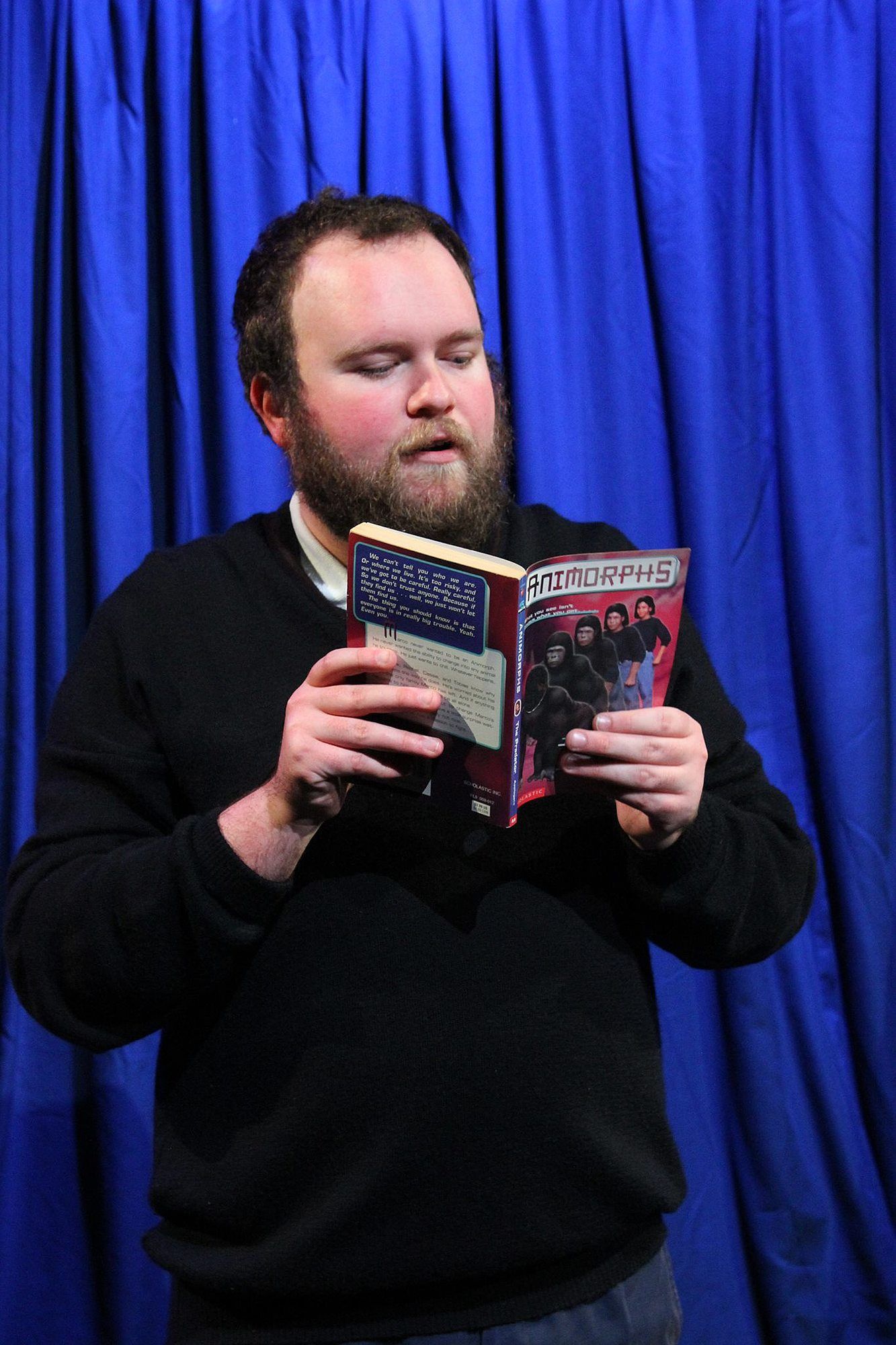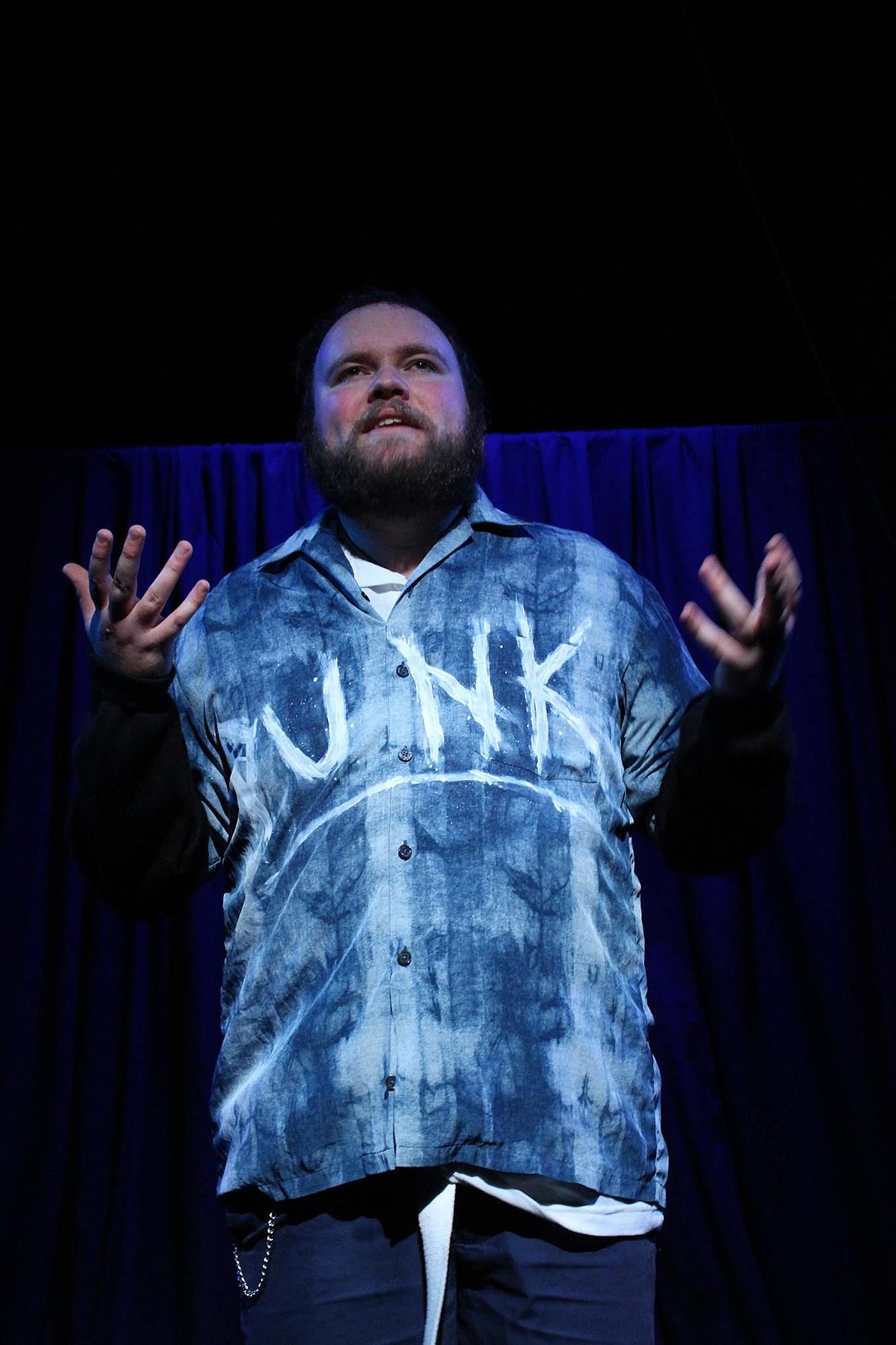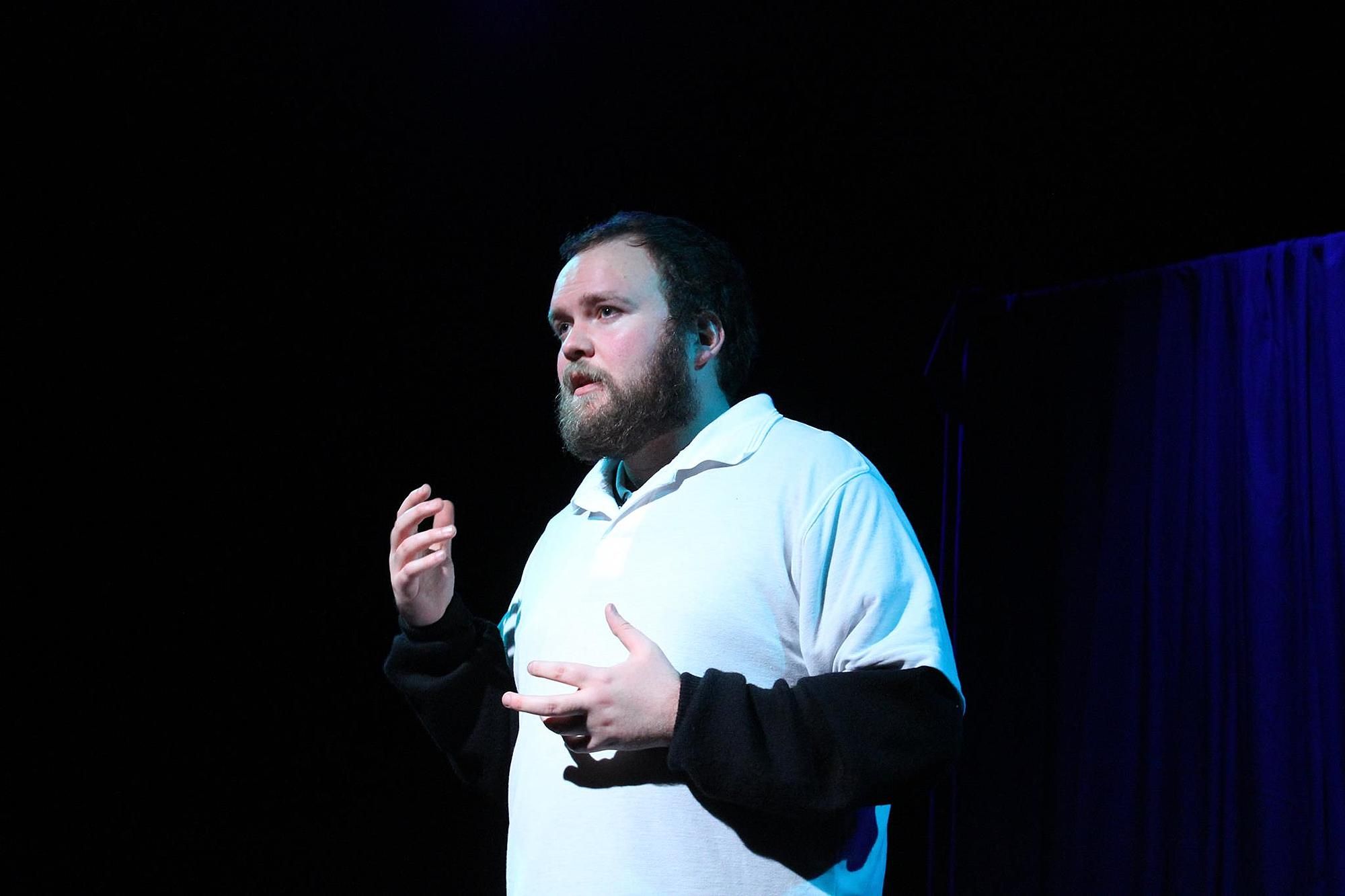Cool Kids: A Review of I, Will Jones
Mia Gaudin reviews Eamonn Marra's I, Will Jones – some deft storytelling about being a bit lost.
Mia Gaudin reviews Eamonn Marra's I, Will Jones – some deft storytelling about being a bit lost.
Theatre Editor Adam Goodall directed this production but don't worry, he had nothing to do with this review.
Eamonn Marra is a cool adult name. So says Marra playing (being?) himself in his latest performance I, Will Jones. Say it again, out loud: Eamonn Marra, Eamonn Marra. Get a chant going. You’re probably saying all the vowels wrong but it’s great for google searches – Eamonn Marra is the only Eamonn Marra in the world!
But Eamonn Marra is not a cool kid’s name. Will Jones is a cool kid’s name. Hear that? The 'i' in Will? The 'i' is the coolest of the vowel sounds. And Will Jones is most definitely a cool kid. The coolest, even, at Opawa School in Christchurch circa 2001.
And thus, against the backdrop of a messy pre-teen boy’s bedroom – clothes, school bags and roller skates in an inordinately large pile on the stage (making for easy costume changes) – our journey into the Blink 182-saturated life of twelve year old Eamonn Marra begins.
I, Will Jones is a bravely and humorously told story of coming to terms with being yourself. While the audience initially feels they are watching a stand-up show, Marra progresses beyond that by creating a developed narrative arc that weaves together memories, fantasy, and self-reflection without losing the charm of his direct address to the audience. The theatricalisation is also credit to the direction of Adam Goodall and work of Emi Pogoni (music), Harriet Denby (production design) and Michael Trigg (lighting) and on stage at the end of the show Marra graciously acknowledges he couldn’t have done it without them.
Marra is playing in the realm of storytelling, and akin to Jon Bennett’s My Dad’s Deaths that showed at BATS earlier this year, his ability to sustain the audience’s attention is reliant on creating a character the audience cares about. We care about 12-year-old Eamonn, who loves his front-suspension bike, reading the Animorph series at SSR, and the kangaroo pocket on his Planet 8 hoodie. We care because we have all the details. Marra creates the character and his world with absolute vividness that gives the audience many strong images and events to latch onto and then layer in their own experiences. His attention to detail allows for the universal.
Serendipitously, I went to the show with a friend from intermediate school (next year is our 20-year frenniversary) and he remarked how crazy it felt to be plunged back into a time in his life he could hardly remember. I just nodded. I remember with desperate clarity my unrequited love for this particular friend. But it’s true: where we may only remember a small collection of the most technicolour moments, Marra has done that hard and sometimes painful work of dredging through his life’s back catalogue to present a complete world in I, Will Jones. At one point Marra remarks, with the sudden adult sadness of crushed rose-tinted glasses that, in the publicity photo of 12-year-old Eamonn leaning against his bike, he is much more overweight than he ever remembered.
But before we get to that adult retrospect, we stay with 12-year-old Eamonn as the narrative arc climbs. It reaches a peak when Eamonn is selected to the Future Leaders Symposium held in the school library. The irony is rich and the audience is in hysterics (Eamonn’s not really the leadership type), but this is a turning point. He learns the ultimate leadership skill: the power of visualisation. This is clever writing on Marra’s part. The ‘power of visualisation’ plot device is brought together with the ‘Animorph ability to morph’ plot device, and a whole new range of storytelling possibilities opens to Marra. He moves from the purely auto-biographical into surreal fiction, nicely mirroring those confusing transitional years between child and teenage-hood.
When Eamonn visualises, and then later morphs, into Will Jones, the gutsy undercarriage of the work really starts to ramp-up.
It’s in the visualising and morphing that the lighting and sound is used to best effect: the yellow lights start dimming, the blue lights turn up, the music goes all low-fi electric and other-world bubbly. When Eamonn visualises, and then later morphs, into Will Jones, the gutsy undercarriage of the work really starts to ramp-up. Marra deals head on with issues of bullying, masculinity, and body image, not just telling stories about particular events (though he does do this) but also confessing his own complicity in finding power over weaker boys wherever he could.
Marra has said he is influenced by the short story writer Grace Paley, who he discovered while studying at the International Institute of Modern Letters (in 2016 he completed the Masters in Creative writing convened by Pip Adam and Emily Perkins). Paley’s stories are driven by their characters. She is able to tell a whole life story, and expose a character’s greatest desires, just in the moments while they are returning a library book. Paley is all about embracing the winding road of human experience: “everyone real or invented deserves the open destiny of life,” she says. In I, Will Jones we see both adult Marra and child Eamonn face into the whole of life’s destiny, while standing in a very messy bedroom.
Grace Paley is also known for directly addressing political issues in her stories, bringing into practice that old adage: the personal is political. She writes with purpose, and in I, Will Jones, Marra does too. This isn’t just a show about belts that look like penises. It’s about all the horrific social, hierarchical and peer pressures that affect our self esteem, starting at a really young age. Marra could go even further to explore that vulnerability and move our sympathetic awwws to tears. I want to cry as much as I laughed.
I’ll remind you that this is a one-man show – there isn’t a Will Jones on stage. As such. There’s a scarecrow-esque estimation of Will Jones – a USA hoodie strung up over a pair of skater jeans with a floppy brown wig that keeps falling to the ground. But this is significant. With the power to morph, Eammon steps into the scarecrow and air-guitars on-stage as his hero, but like any come-down, returning to the reality of his own body is a punch in the guts. Marra directly addresses the mental hurt of living life feeling like a sub-par human and doesn’t add any cheese (just a lot of Animorph references). In his most honest moment of truth he tells the audience that he “knows this show is meant to be about finding yourself,” but it’s not that simple. Life doesn't get any easier.
Eamonn Marra is a cool adult. Anyone who can look at themselves like Marra does, acknowledge their insecurities, struggle to overcome them and realise maybe overcoming isn’t the goal, is a cool adult in my books. It’s hard to leave I, Will Jones without a greater sense of empathy. If Marra’s goal is to make work guided by Paley, he should be proud that he has made an important piece of theatre that helps us all to be kinder to ourselves and others. And have a good laugh.
I, Will Jones runs from 19-23 September at BATS Theatre. Tickets available here.




